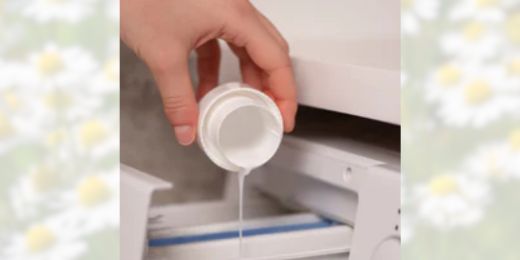FREE NATIONWIDE SHIPPING ON ORDERS $69 AND OVER
FREE NATIONWIDE SHIPPING ON ORDERS $69 AND OVER
Add description, images, menus and links to your mega menu
A column with no settings can be used as a spacer
Link to your collections, sales and even external links
Add up to five columns
Add description, images, menus and links to your mega menu
A column with no settings can be used as a spacer
Link to your collections, sales and even external links
Add up to five columns

Fabric Softeners “A slime of Chemicals”
November 03, 2022 2 min read
Fabric Softeners “A slime of Chemicals”
This is how Senior Scientist Rebecca Sutton at EWG (Environmental Working Group) described most all Fabric Softeners on the market in 2011 – in a recent update, EWGs Samara Geller reports that not much has changed.
Fabric Softener marketing teams will have you believe
- If it smells nice it must be clean
- That the product removes static and wrinkles
- With less stretching, fading, and pilling.
But at what cost to our health and the environment?
Fabric softeners and dryer sheets can contain a hefty combination of chemicals that can harm our health.
Here are some things to watch out for.
QUATs (Quaternary ammonium compounds)
Some of the main offenders are what are termed QUATs (Quaternary ammonium compounds)
They make our clothes feel soft and wearable without wrinkles and crinkles.
BUT
They are also known to:
- Trigger asthma and
- May cause harm to our reproductive system.
In other countries, it might be possible to check the labels but here in New Zealand, there is no legal requirement for companies to list their ingredients on cleaning products.
If there is a list of ingredients listed watch out for these nasties distearyldimonium chloride and others ending in “monium chloride” or containing the word Dialkylester, as well as vague terms like “biodegradable fabric softening agent” and “cationic surfactant.”
Fragrance
According to an EWG article, there are over 4000 fragrance ingredients in household products, and scarcely any way to know what they are. But a very high percentage of them will be synthetic musks such as galaxolide, which is petroleum-based, phthalates which disperse scent. Both these accumulate in our bodies.
Fragrance is most often a cause of irritation and skin and respiratory allergies
A quick survey of Fabric softeners in our local supermarket found that only one brand
Eco Store had a list of ingredients that the EWG would consider safe. Two other eco brands both contained QUATs and other brands had no ingredient lists at all.
Of further interest is that Consumer Nz has made recommendations about using Fabric Softeners. Labelling them a waste of money.
Three reasons they outlined were
- Fabric softeners can react with Laundry detergent in the water, resulting in a waxy residue. This can build up in our washing machines which can damage it or contaminate our laundry.
- Fabric softeners can make our towels less absorbent. This occurs because the chemicals make the fabric strands fluff up. The downside according to Consumer NZ testing is that softer textiles absorb less water. In their words “a softer towel isn't much good if you can't dry your self”
- Fire Risk WHAT!! Flame-resistant fabrics such as kiddies PJs can become more flammable when coated in the softener (it is possible to re-establish the flame retardant by washing without fabric softener).
So skip the Fabric Softener and dryer sheets altogether or try these alternatives.
- Add ½ a cup of white vinegar to your rinse cycle, (it doesn't make your clothes smell like vinegar, but will soften your laundry).
- If you're using your dryer, grab some 100% NZ wool dryer balls, the wool will soften your laundry, help reduce static, and the balls separate the laundry which cuts down on drying time.
Leave a comment
Comments will be approved before showing up.

